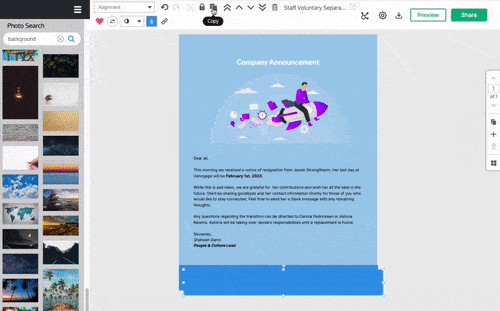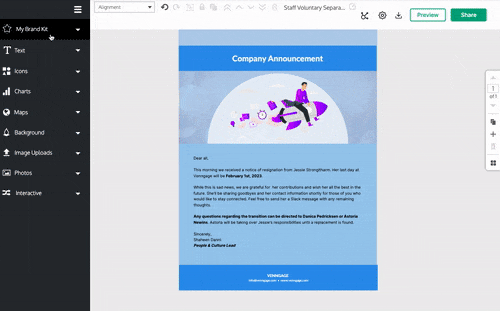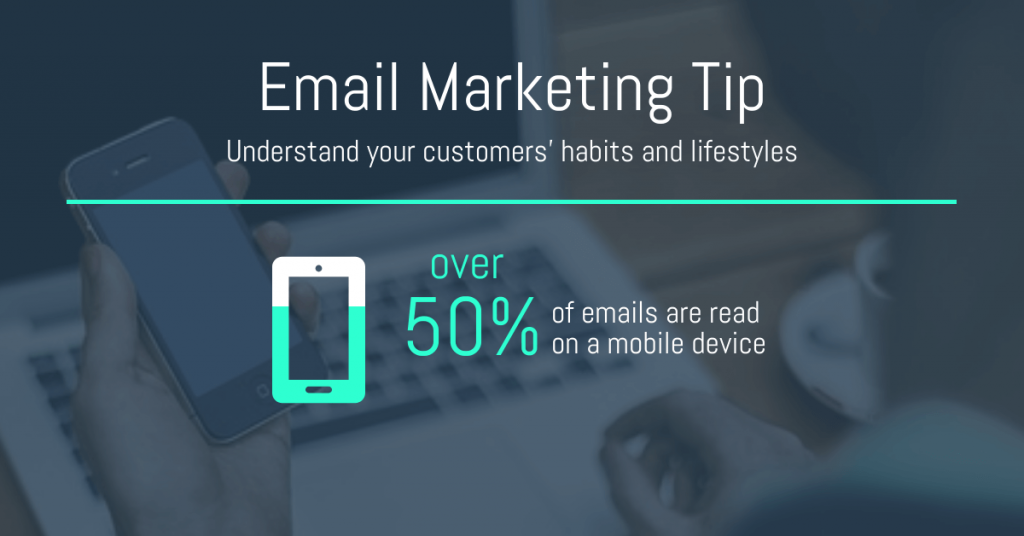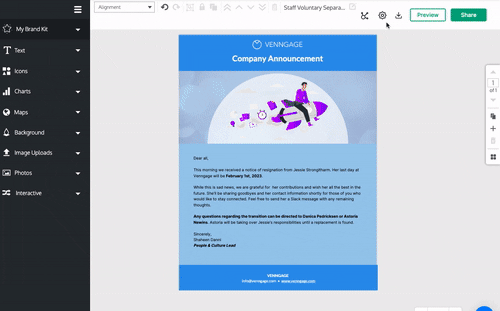
Email newsletters are a great way to stay connected with subscribers, customers and employees alike — especially when it comes to highlighting company updates, sales offers and new products and services. But if you want to stand out in the inbox, your newsletters need to look and sound compelling.
Creating a powerful newsletter that drives results is easier than you think. In this guide, I’ll break down the process into just 10 simple steps, making you a newsletter pro in no time.
We’ll cover the benefits of newsletters, the key elements for success, and even design tips using handy newsletter templates. Get ready to confidently connect with your audience through the power of email marketing!
Click to jump ahead:
- What is a newsletter?
- What are the benefits of creating a newsletter?
- How to create a newsletter
- Newsletter FAQ
Newsletters are emails that companies used to share information with a given audience. They are typically sent out on a regular basis, and may be sent externally to subscribers or customers, or internally to employees.
In the first two cases, you need to legally collect email addresses, and a common way to do this is through subscription forms. These can be created using specialized services, making the process much easier. Subscription forms are useful because you can ask for not just email addresses, but other information that will help personalize your email campaigns. For this purpose, it’s better to use multi-step forms.
That means there’s no shortage of topics and content you can cover!
Some common uses for newsletters include:
- Website marketing to highlight new products and services
- Advertising promotions, sales and discounts
- Showcasing upcoming events with add to calendar buttons
- Sharing company information, updates and news
- Distributing educational content (i.e. industry insights, articles and tips)
- nurturing relationships with subscribers and customers
Here’s an example of an email newsletter template relaying promotional info:
And here’s a newsletter used for providing resources and important information with your mailing list:
Finally, here’s one that’s great for sharing internal updates with your team:
As you can see, newsletters sent by businesses or organizations are a great way to build loyalty and foster conversation with subscribers and prospects. They provide valuable information, help build brand awareness and engage people right where they spend a lot of time: their inbox.
From communicating company news and inviting subscribers to purchase, to managing remote teams and keeping everyone in the loop, these digital messages — when constructed well — are guaranteed to deliver results.
Related: 12+ Best Newsletter Examples to Inspire Your Next Email Campaign Strategy
The most important part of creating a newsletter is choosing the right platform. Do you need a tool with excellent deisgn features? Customization and branding options? Analytics and reporting?
Here are the different types of newsletter platforms you can try:
| Aspect | MailChimp | Venngage | Substack | Canva |
| Best for | Tracking email newsletters performance | Creating customized, branded newsletters | Starting a subscription-based newsletter | Creating visually appealing newsletter designs |
| Ease of use | Simple interface for managing email lists | Simple, no-code design platform with drag-and-drop functionality | Easy-to-use platform for beginners | Simple design solution |
| Customization | Customizable templates for email campaigns | Highly customizable with branding options using My Brand Kit feature | Limited customization options | Extensive customization options for design elements |
| Key features | Analytics, A/B testing, segmentation | Templates, branding tools, AI Newsletter Generator | Monetization, subscription management | Templates, design tools, animations |
| Free plan | Available with limited features | Available with limited templates | Free with basic functionality | Available with limited templates and design elements |
Once you’ve shortlisted the right platform, start designing the newsletter!
Creating a successful newsletter involves planning, design and consistent effort. Here’s a step-by-step approach to get you started:
- Define your goals, audience and email marketing strategy
- Select a newsletter design and email marketing software or tool
- Choose a template and email layout accordingly
- Add your content, personalize your design and prioritize accessibility
- Export your newsletter to HTML
- Decide on a subject line for your email
- Preview and send a test mail
- Send your newsletter via an ESP
- Review your email metrics
- Analyze and iterate your email marketing results
1. Define your goals, audience and email marketing strategy
The first step to creating a newsletter is to have a clear understanding of the goal of your emails, your audience and your strategy for reaching people. Defining these elements is your key to crafting successful newsletters that resonate.
Let me explain…
Newsletter Goal
Knowing what you want to achieve with your newsletter will guide your content development and other aspects of your email marketing plan.
A word of advice: your goals should be specific and measurable. For newsletters to subscribers, you may be looking to increase your website traffic or conversion rates. So you’ll need to send promotional emails that link back to your site and products.
Perhaps a little something like the newsletter template above.
For a company newsletter, you might have the goal of increasing engagement and getting everyone on the same page.
A concrete and measurable example of this would be to increase sign ups for internal events, or grow your email engagement by noting any boosts in click-through rates (CTR). Tracking the results gained by using the email template above would make it easy to see how you’re doing.
Newsletter audience
You’ll also need to define who your newsletter is being delivered to —this includes stuff like building an email list or segmenting your contacts. You can even use dedicated tools to find anyone’s email and ensure you’re reaching the right audience
Knowing your audience allows you to tailor and personalize your newsletter content and marketing strategy to their interests and needs. Email finder tools can help you locate the contact information for your ideal subscribers. Consider things like their age, gender, occupation and location, as well their interests and preferences for receiving emails.
Email marketing strategy
Your outreach strategy should include a plan for how often you’ll send your newsletter and the time and date you’ll send them, what kinds of content you’ll include and how you’ll promote it.
Be sure to consider how you’ll measure the success of your newsletters and email marketing campaigns, and which metrics you’ll track.
By clearly defining your goals, audience and outreach strategy, you’ll forge ahead with a concrete plan that’ll ensure your newsletter is primed for success.
Want a handy doc you can customize to write out and present your email strategy?
This marketing plan template has everything you need. Feel free to customize each section, the layout and the text so it reflects your own personal newsletter action plan.
Remember how I said you don’t need to be a graphic designer to create amazing email newsletters?
It’s true. By using an email marketing software and creation tool like Venngage’s Newsletter Creator, you can start designing engaging emails in minutes — no design experience, technical coding or HTML knowledge required.

You’ll find the free tool incredibly simple to use: there’s virtually no learning curve, especially if you’ve used any kind of drag-and-drop editor before.
All you need to do is sign up for a free account select from hundreds of professionally-designed newsletter templates to act as your starting point. Then, customize any visual asset on the page to suit your needs.
What’s more, Venngage’s Newsletter Creator gives you access to a ton of amazing features, like:
- 100% customizable newsletter designs
- Countless data visualization options (e.g. charts, graphs etc.)
- Millions of royalty-free stock images and illustrations
- Thousands of diverse, customizable icons
- Automated branding with My Brand Kit (paid plans)
- Real-time Team Collaboration (paid plans)
- Direct export to HTML for clickable email campaigns (paid plans)
- Accessibility features to ensure you’ve created (paid and free plans soon)
Sign up for free to start creating newsletters like the one below quickly and easily.
3. Choose a template and email layout accordingly
The next step is to choose a template that suits your needs and email content goals (see #1). This involves considering what kind of email layout will serve you best.
Email layout refers to the look and feel of elements in your email, its aesthetic appearance and visual qualities. Besides design choices surrounding its color palette, font choices, design style, contrast and white space, the email layout also speaks to how the content is laid out.
Single column newsletters are great for simplifying the browsing experience by streamlining info into one continuous flow from top to bottom, just like how we naturally read.
In the editable newsletter template below, you can see how placing all the promo details within a single column gives interested readers the ability to instantly understand all they need to participate.
This motivates your email subscribers to convert by placing all relevant information and the CTA smack-dab in the middle, right where readers would naturally come across them. No distractions — just the offer.
This is also key if you’re trying to relay a message clearly and directly.
By sending this single column outreach email, you can be assured potential leads will get the message loud and clear.
Meanwhile, double or two column newsletters are fabulous for image or information-heavy content or when you’re covering multiple topics, since they divide content into two separate blocks.
This internal company update newsletter highlights different kinds of information effectively.
Need more sections to advertise products, for branding purposes or to curate info the way it’s intended to be consumed? Multi column or hybrid layouts got you.
Here’s an infographic-style email that shows this off:
No matter which kind of layout and email design you believe suits your content best, Venngage has tons of free and premium newsletter templates you can quickly and easily customize. All you need to do is add in your content.
Related: 15+ Email Marketing Infographics to Spark New Ideas and Plan Strategy
4. Add your content, personalize your email design and prioritize accessibility
Once you’ve chosen a newsletter template, the next step in the production process is to 1) swap in your desired content and 2) personalize your email design.
Generally, that means you’ll need to:
- Swap out the template’s text, images/illustrations and buttons
- Adjust the size of each section to your liking
- Add your colors/color palettes
- Change out or add icons
- Hyperlink any CTAs and buttons
- Check for accessibility
I’ll use Venngage’s templates and editor to showcase:
Let’s say our Human Resources team needs to alert staff of my upcoming resignation. To do so, I can start off by using this company announcement newsletter template.
The first thing I’ll do is replace the placeholder text content for my own. I’ll then adjust the font style and size to suit my liking.

After, it’s time to customize my design. I like the main graphic, so I’ll keep that. But I want to add my own flair, plus integrate our brand colors and logos (you know, to maintain brand consistency and all that good stuff!)
Here, I’ve adjusted the background color based on my brand colors, and added an image overlay on top of the background using our stock image library. I’ve adjusted the value (opacity) of the image to help it all blend together too.
I’ll select My Brand Kit at the top left of the page to automate my branding with a few clicks.
Looking to add more visual interest? Add icons quickly and easily by searching for a keyword in the icon search bar. (I’m not actually adding these, but just know that I could).

Make sure to clickable links to your newsletter designs, of course. This is vital when exporting your design to HTML so subscribers can act on those CTAs.
And there we have it, a completely customized email design that suits my needs.
Note that you can add data visualizations or other interactive elements as you see fit. But for my purposes, this’ll do the trick.
Don’t forget about newsletter accessibility!
I’ve noticed many “how-to” guides gloss over this subject, and it’s a shame. Because accessible design is a crucial consideration when it comes to creating a newsletter.
Not only is it a legal requirement to provide accessibility for people with disabilities, but it also ensures everyone can engage with your content while improving the overall user experience. So consider the needs of people with visual, auditory, motor, and cognitive impairments when creating your newsletter.
This includes things like using high-contrast colors for text and images, providing alt text and using simple and clear language and navigation. (Psst! Venngage’s editor has built-in accessibility tools and checks.)
Looking for accessible color palettes? Try out Venngage’s FREE Accessible Color Palette Generator.
You should also try to use a responsive email design that adapts to different screen sizes and devices, since nearly 50% of the world’s population opens their email on mobile devices.
All of the above will not only help you comply with legal requirements — it’ll also show your commitment to providing an inclusive and equitable email experience for everyone.
Finally, it’s time to export your creation and get it all ready to send. To do that, you’ll need to export your email as an HTML file.
HTML allows you to create a visually appealing, interactive email that can be easily viewed on any device. By exporting your newsletter to this format, you can include hyperlinked content and graphics, and embed videos and other multimedia elements that enhance users’ experience.
You can include alt text tags and abide by other accessible design best practices. (FYI, it’s a major email accessibility no-no to send newsletters as one giant image file).
Venngage’s email marketing features allow you to export your design as a clickable HTML file directly.
6. Decide on a subject line for your email
The first thing your audience will see is the subject line of your emails. So, make sure you spend time scheming up some winning words.
Here are a few tips to help you write great newsletter subject lines:
- Keep it short and sweet: The subject line should be brief (ideally no more than 60 characters), to ensure it doesn’t get cut off.
- Get personal: If you’re able to, add recipients’ names or other personal information to make the email feel more personal and relevant.
- Create a sense of urgency: For product and sales newsletters, use words that encourage readers to act fast (i.e. “limited time”, “last chance”, “24 hours left”)
- Write a pre-header: Use pre-header text to give a preview of the email content and entice opens.
- A/B test: Segment your list and try out different subject lines to see which styles perform best.
- Be creative: Use emojis, questions, numbers or puns to grab email subscribers’ attention and make it stand out.
- Follow email best practices: Avoid spam trigger words and keep your subject lines in line with your content to avoid misleading your recipient or getting marked as SPAM.
One email marketing tool I’ve found useful is this Headline Analyzer by AMI institute. Input a subject line, and the site will assess its “Emotional Marketing Value” — AKA its ability to connect with viewers. You can test out a few and see where they land.
7. Preview and send a test mail
It’s best practice to preview your templates on the email clients and devices across various devices, platforms and settings. (Particularly, the email clients most used by your audience!)
Using an email testing service ensures your audience can interact with the design and understand your newsletter content — which is key if you want to engage and/or convert them.
Oh, and be sure to check your links. With that, you’ll have full confidence that you can send successful emails every time.
After testing your email newsletter and making any adjustments, the next step is to send it out to your audience via an email service provider.
An email service provider (ESP), is a platform that allows you to send bulk emails to a large audience, track metrics and manage your email list. HubSpot, Mailchimp, Constant Contact, Moosend and Active Campaign and its alternatives are a few notable options.
While not all email providers have the same features, they generally allow you to upload a contact list, create a new email campaign, and schedule emails as needed.
ESPs also offer a wide range of customization options to personalize your emails and segment your audience. You can also set up automations, such as welcome emails, and use analytics tools to track your email’s performance.
Which brings me to my next point…
9. Review your email metrics
Reviewing your email metrics a few days after is an important step in the newsletter creation process, allowing you to measure the success of your email marketing campaigns and make data-driven decisions to improve future ones.
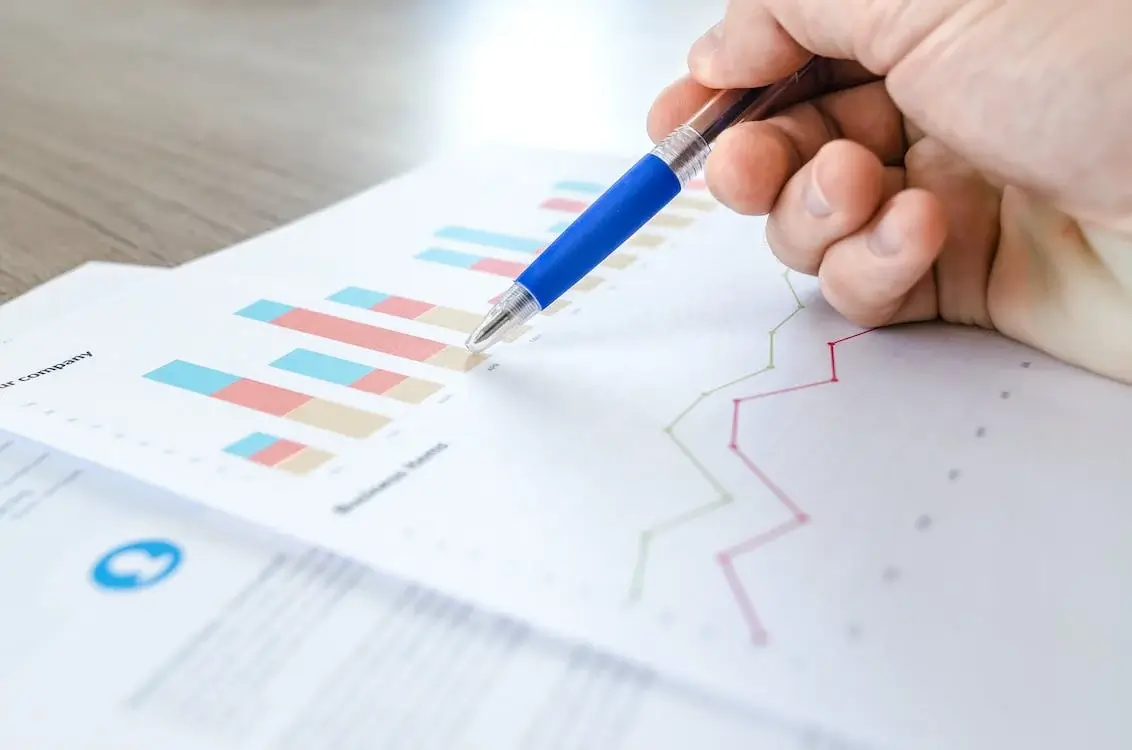
Your Open Rate (OR) indicates how many people are actually opening your newsletter. Low ORs may indicate your subject line is not compelling enough, or your recipients are not interested in newsletter content.
Your Click-Through Rate (CTR) indicates how many people are clicking on links within your newsletter. Low CTRs can indicate the content of your newsletter is not engaging or relevant with your audience.
Your Unsubscribe Rate (UR) also matters. A high unsubscribe rate may indicate your newsletter is failing to deliver value, or you’re sending too many of them.
10. Analyze and iterate your email marketing results
Last but certainly not least, you should use those learnings to track your email marketing results and improve your strategy over time.
For example, if you notice that a certain subject line or type of content led to a higher open rate, you can use that information to inform future newsletter campaigns.
Similarly, if you notice that a certain call-to-action or design element led to a higher click-through rate, you can incorporate those elements next time.
Here’s a document for showcasing all those fancy stats:
By iterating on the elements that garnered good results, you can improve the effectiveness of your newsletter campaigns over time.This will help you to deliver more relevant and engaging content to your audience, which will in turn lead to better results.
Remember: it’s easy to adjust as needed with Venngage’s editable newsletter templates.
To create a newsletter for free, look no further than Venngage’s huge selection of free email newsletter templates and intuitive, no-code editor. Here’s how to get started:
Step 1: Sign up for a free Venngage account.
Step 2: Visit the newsletter template page and sort the results by ‘Plan Type’ to filter out paid options. Hit the “Create” button on the template page once you’ve found one you like.

Step 3: Swap in your desired email copy, icons and colors to make it suitable for your business and use case. Looking to keep your branding consistent and your team in the loop? With a Business Plan, you get access to premium features that your comms team will love — like real-time Team Collaboration and automated branding via My Brand Kit.

Step 4: Once you’re happy with your newsletter design, you can share the link publicly for free, or upgrade to a paid plan to download your custom template. You can also export it to an HTML file and use with your preferred app. Venngage files work with Mailchimp, Outlook and other mass email service providers.
Sending newsletters is a cost-effective way to reach a larger audience and achieve your business goals. For example, newsletters can help you with:
- Reaching a large audience in a targeted and personalized manner.
- Promoting new products and services, announcing sales and special offers.
- Enhancing brand awareness and recall.
- Building customer loyalty by providing them with valuable information, keeping them informed and engaged,
- Improving communication and collaboration among employees
- Providing a forum for sharing information and ideas.
According to research by Statista, the number of email users worldwide is set to reach 4.6 billion by 2025 — which means that a significant portion of the population can be reached through email newsletters.
Newsletter FAQs
There are many email marketing platforms and programs that can help you create a newsletter, such as Adobe, Lucidpress, Microsoft Publisher and Venngage. But Venngage is the best choice if you want to create a professionally-designed newsletter in just minutes. It offers a huge selection of easy-to-edit newsletter templates and drag-and-drop visual editor makes to design newsletters quickly.
The easiest way to create a newsletter is to start with a customizable newsletter template. With ready-made email layouts and easy-to-edit components, there’s no need for prior design knowledge, technical skills or steep learning curves. Simply swap out the content of your email newsletter template, add your desired visual assets and you’re good to go.
The most effective newsletter contain these 5 elements:
- Compelling subject line: the subject line and pre-header should entice readers to click the email right away.
- Appealing visuals: avoid an unorganized, cluttered layout; use a pre-made template instead.
- Engaging content: keep your content focused.
- Responsive design: mobile-friendly layouts are important to accommodate those who check their email on smartphones and other mobile devices.
- Clear CTAs: whatever you’re trying to accomplish with your email, make sure subscribers can understand and take the next step by ensuring your call-to-actions are obvious and accessible.
Choosing the right newsletter format depends on your goals. HTML offers visual appeal and tracking, while plain text feels more personal and boosts deliverability. Always use responsive design to ensure your newsletters look great on any device, improving engagement and user experience across the board.
Yes, newsletters are still profitable. In fact, the some successful businesses have generated $2.65 million per year with newsletters. You can use newsletter monetization strategies, such as affiliate marketing, sponsored content, and paid subscriptions to make your newsletters profitable.
Creating a newsletter is a great way to communicate with your audience, promote your business and build relationships with subscribers and employees alike. With thoughtful design, compelling content and a clear purpose, readers will welcome you into their inboxes.
With Venngage’s Newsletter Creator and email marketing tools, you can design great emails quickly and easily, using a wide range of pre-made newsletter templates as your launchpad. Get started for free and reach your audience effortlessly.









































